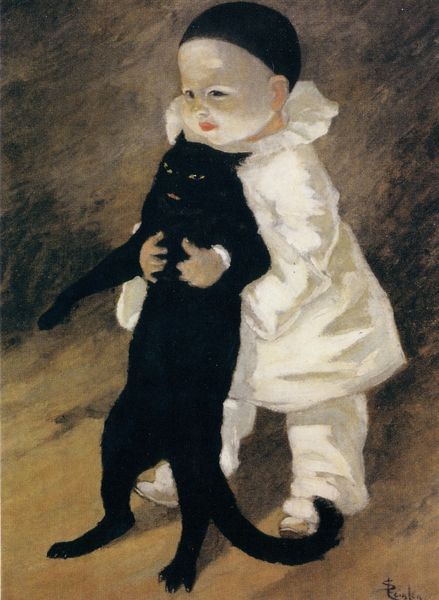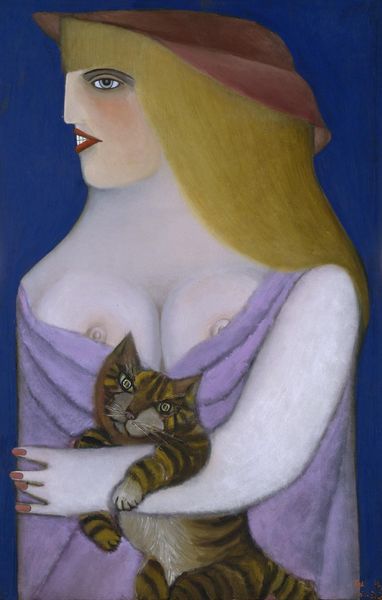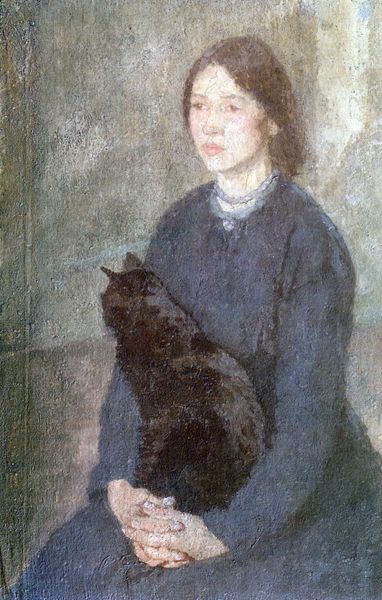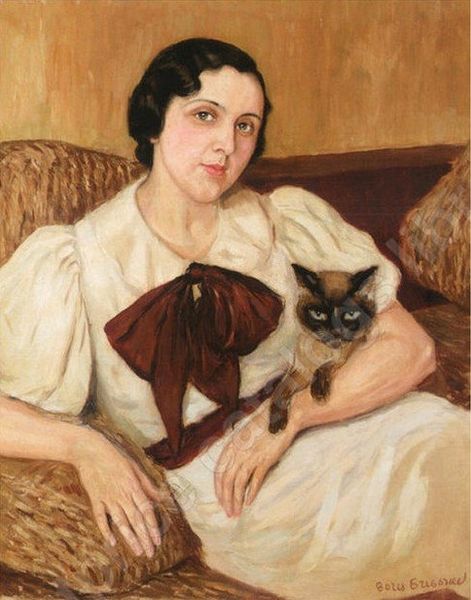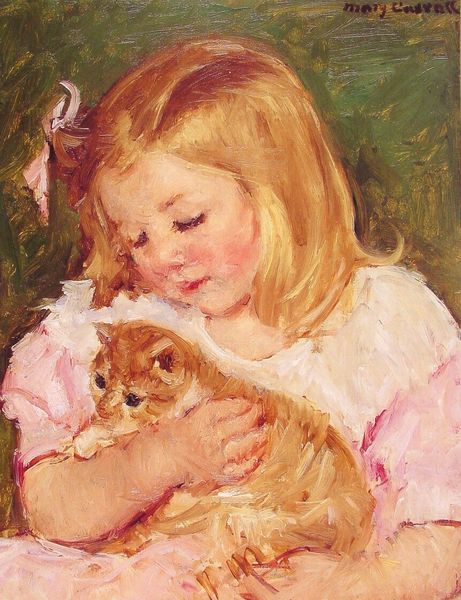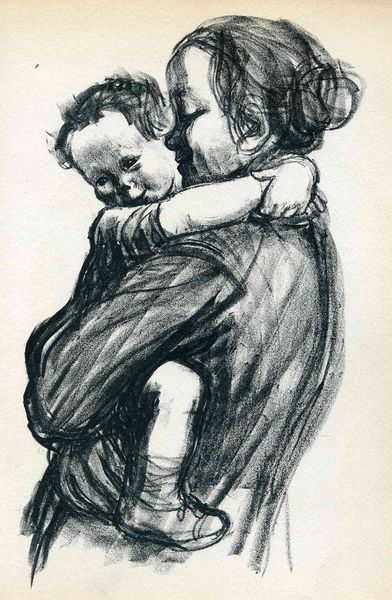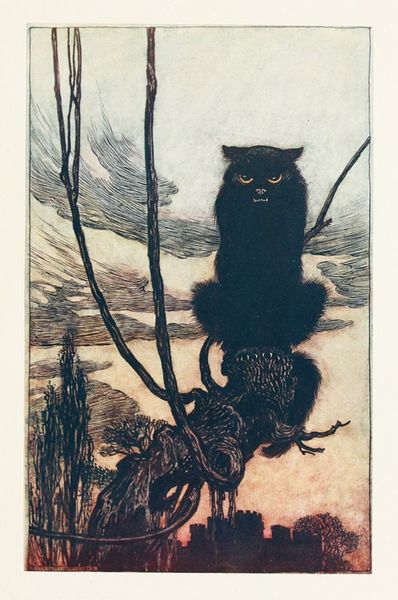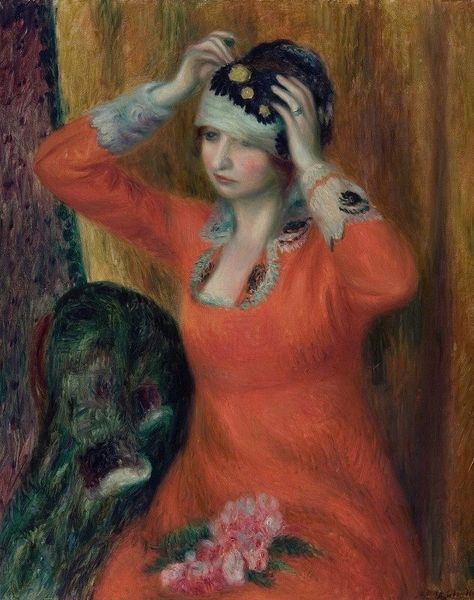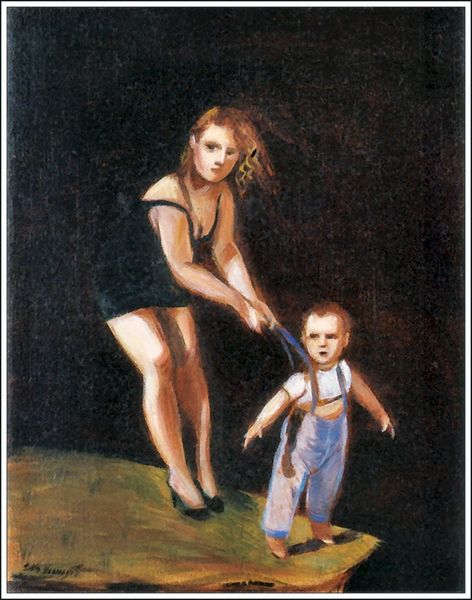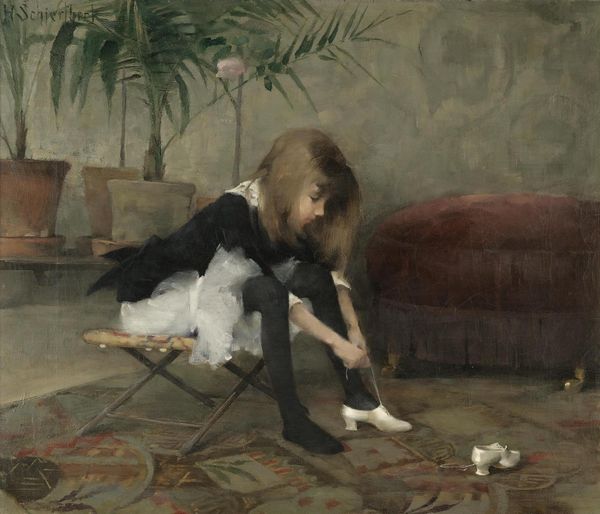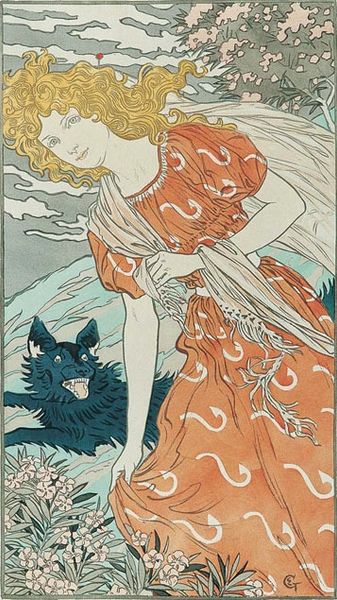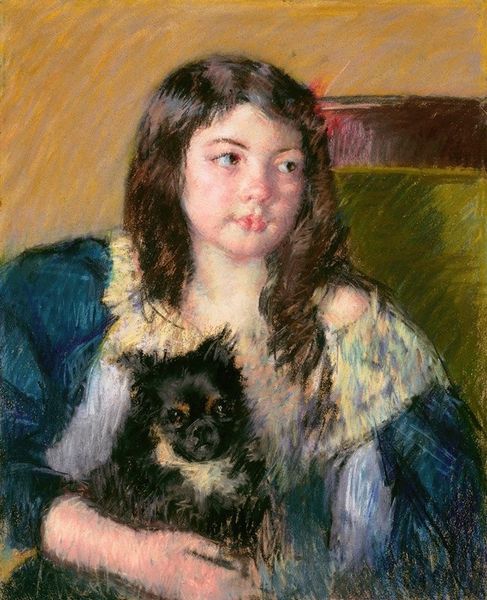
painting, oil-paint
#
portrait
#
painting
#
impressionism
#
oil-paint
#
genre-painting
Copyright: Public domain
Curator: Standing before us is Thèophile Alexandre Steinlen's painting, "Girl with Cat." It appears to be an oil-paint portrait rendered in the Impressionist style and strikes me as an early example of genre painting, highlighting familiar scenes from everyday life. What do you make of this painting as a whole? Editor: Well, my first impression is a feeling of tenderness, but with an undercurrent of… something else. Maybe it's the cat's slightly disgruntled expression. It makes me chuckle. What's going on between those two, really? Is it friendship, or a forced embrace? Curator: That contrast is fascinating. Consider the historical moment; images of children with animals were often deployed as symbols of innocence and domestic harmony. But looking at Steinlen, the girl's stare has a disquieting blankness, challenging our conventional expectations. How do you read this tension in relation to societal values? Editor: It makes me think about authenticity versus performance, especially regarding children. They are often thrust into roles—"be cute," "be quiet"— and maybe Steinlen is hinting at the subtle coercion behind those expectations. And honestly, the cat looks as thrilled about it as a toddler forced to smile for photos. It’s relatable! Curator: Indeed. Looking through a post-structuralist lens, we could consider this tableau as a disruption of innocence, exploring themes of childhood as constructed by cultural narratives. Note that the black cat challenges stereotypical association of impurity. Editor: Absolutely. Instead of simple innocence, we have this layered portrayal of individual wills clashing, all rendered with a delightfully loose, almost sketch-like quality. The artist wasn't aiming for some kind of stiff realism. It feels immediate. You almost see their world, filtered through their unique emotions at the moment. Curator: That emphasis on immediate emotionality is consistent with the aesthetic concerns of Impressionism. And thank you for noticing Steinlen's technique: those visible brushstrokes signal the artifice, revealing the process of image making. They encourage us to reflect upon, rather than simply consume, idealized visions of childhood and pet ownership. Editor: That’s brilliant— it is art about art, life about art. It really encourages a modern reflection. So much complexity packed into what initially appears as a straightforward image! I think it gives us space for imagining a lot of emotional stories about what is like being at one’s home. Curator: And through Steinlen’s perspective, these reflections provide us with valuable insight to our cultural understanding and practices.
Comments
No comments
Be the first to comment and join the conversation on the ultimate creative platform.
